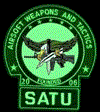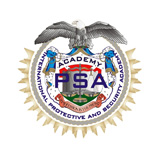-The US.Marine Corps History

Alapítási éve : 1775 November 10-én a Kontinentális Kongresszus határozata alapján.1834-ben a Tengerészgyalogság a Haditengerészet része lett
Alapítás helye : Pennsylvania állam (Philadelphia,Tun Tavern)
Jelképe : A sas a földgömb és a horgony jelkép 1868 óta része az egyenruhának, de csak 1955-ben vált a hivatalos jelképévé a Tengerészgyalogságnak.
A sas kitárt szárnyakkal az Egyesült Államok büszke nemzetét jelképezi. A földgömb a világszerte való jelenlétükre utal, míg a horgony a tengerészeti hagyományokat jelképezi. Együtt a szolgálatra való felajánlást fejezik ki levegőben, földön és vízen.
Jelmondata : A hadtest mottója, amelyet 1883-ban fogadtak el ami latinul, a “Semper Fidelis”, “mindig hűséges”.
General Terms:
“First To Fight”– Marines have been in the forefront of every American war since the founding of the Corps. They entered the Revolution in 1775, even before the Declaration of Independence was signed! Marines have carried out more than 300 landings on foreign shores. They have served everywhere, from poles to tropics; their record for readiness reflects pride, responsibility, and challenge.
“Leatherneck”– This nickname goes back to the leather stock or neckpiece, which was part of the Marine Corps uniform from 1775 to 1875. The leather collar was designed to protect the jugular vein from saber slashes. It also insured that Marines kept their heads erect and maintained military bearing. Although no longer used, it is commemorated by the standing collar on the dress blue and dress white uniform.
“Uncommon Valor was a Common Virtue”– Refers to the victories in World War II, especially at Iwo Jima, the largest all-Marine battle in history. Admiral Nimitz’s ringing epitome of Marines fighting on Iwo Jima was applied to the entire Marine Corps in World War II: “Uncommon valor was a common virtue.”
“Devil Dogs”– In the Belleau Wood fighting in 1918, the Germans received a thorough indoctrination into the fighting ability of Marines. Fighting through supposedly impenetrable woods and capturing supposedly untakeable terrain, the men of the 4th Marine Brigade struck terror in the hearts of the Germans, who referred to Marines as the “Teufelhunden”, meaning “fierce fighting dogs of legendary origin” or as popularly translated, “Devil Dogs.”
“The Marine corps motto”– That Marines have lived up to their motto, “Semper Fidelis” (Always Faithful), is proven by the fact that there has never been a mutiny among U.S. Marines. This motto was adopted about 1883. Before that, there had been three mottoes, all traditional rather than official. The first, “Fortitudine” (With Fortitude), appeared about 1812. The second, “By Sea and by Land,” was obviously a translation of the Royal Marines’ “Per Mare, Per Terram.” Until 1848, the third motto was “To the Shores of Tripoli,” in commemoration of O’Bannon’s capture of Derne in 1805. In 1848, after the return to Washington of the Marine battalion which took part in the capture of Mexico City, this motto was revised to “From the Halls of Montezuma to the Shores of Tripoli.” The current Marine Corps motto is shared with England’s Devonshire Regiment.
“The President’s Own”– Established by an act of Congress in July 1798 (more than a century before the bands of the other three services), the Marine Band has performed at White House functions for every president except George Washington. Thomas Jefferson was especially fond of the band. Because of its traditional privilege of performing at the White House, the band is spoken of as “the President’s Own.”
“Retreat, Hell! We Just Got Here!”– Fighting spirit and determination against heavy odds is a sound tradition in the Marine Corps. Nowhere is there a more graphic illustration than an incident which occurred in World War I. Legendary or true, it personifies the aggressive attitude of Marines. The occasion was the third great German breakthrough of 1918, when the 4th Marine Brigade and its parent 2d Infantry Division were thrown in to help stem the tide in the Belleau Wood sector. The 2d Battalion, 5th Marines had just arrived at its position when an automobile skidded to a stop and a French officer dashed out and approached the commanding officer. He explained that a general retreat was in progress and that orders were for the Marines to withdraw. The Marine officer exclaimed in amazement, “Retreat Hell! We just got here!” The Marines proceeded to prove their point. The battalion deployed and took up firing positions. As the Germans approached, they came under rifle fire which was accurate at ranges beyond their comprehension. Not in vain had the Marine Corps long stressed in its training the sound principles of marksmanship. The deadly fire took the heart out of the German troops, and the attack was stopped.
“Gyrenes”– The term “gyrene”is a jocular reference to Marines which was first used in England as early as 1894. It was used in the United States around the time of World War I. Its exact origin is unknown, but it did appear to have a derogatory meaning in its early usage. It has been suggested that the term may embody a reference to pollywog, a naval slang term for a person who has not yet “crossed” (the equator), hence, a landlubber.
“Jarhead”– A slang term used by sailors as early as World War II to refer to members of the Marine Corps, drawing the term from the resemblance of the Marine dress blues uniform, with its high collar, to a Mason jar which at the time was made from blue glass.
The beginning:
The origins of the Marine Corps can be traced back to the colonial battalions of Marines raised in America before the Revolution and modeled after their British counterparts.
In 1740 four battalions of Marines (3,000 men) were raised for service in Britain’s war with Spain. Designated 43rd Regiment of Foot, they became known as “Gooch’s Marines”, after their commander, Colonel William Gooch. In April 1741 they were involved in a battle at Cartagena, Colombia, and in July 1741, Marines landed unopposed at Guantanamo Bay, Cuba, to secure it as a base for the British fleet.
The Colonial Marines served in the British Navy as marksmen aboard its ships and providing the cutting edge of boarding parties. Their duties also included shipboard security and maintaining discipline among the seamen. History shows numerous incidents where the timely arrival or mere presence of Marines prevented/stopped mutinies.
Revolutionary War – 1775-1783
The US Frigate Alfred landed 268 Marines, under the command of Captain Samuel Nicholas, on New Providence Island in the Bahamas for their first military expedition. Within 13 days the Marine raiding party captured two forts, occupied the town of Nassau, took control of Government House and seized 88 guns, 16,535 shells and other supplies. Nicholas was promoted to Major and in December 1776 he and approximately 300 Marines joined Washington’s Army in Pennsylvania just before the second battle of Trenton.
Marines took part in the attacks on English ships in European waters of the American Ship Reprisal until its loss. In April 1778 a Marine detachment took part in two raids on the soil of Great Britain conducted from the Ranger, commanded by John Paul Jones. Marines from the frigate South Carolina made a landing on the Isle of Jersey in 1781. These were among the few such landings on British soil in over 700 years.
War with Tripoli 1801-1805 “Barbary Pirates”
*Capture of fortress at Derne, Tripoli…..April 25-27, 1805
Marine Lt. Presley N. O’Bannon led a force of Marines and Mercenaries across 600 miles of Libyan desert, to attack the fortress at Derne, Tripoli, while Naval forces provided bombardment. This was the first time an American flag flew over a captured fortification in the “Old World”. In appreciation for O’Bannon’s services, Hamet Bey (the rightful ruler of Tripoli) presented O’Bannon with his own sword, a curved blade with ivory hilt topped by a golden eagles head. The Mameluk sword. This sword served as the pattern for swords carried to this day by Marine Officers.
War of 1812
A battalion of 114 Marines with a few sailors, led by Captain Samuel Miller attempted to defend Washington against 4,000+ British troops. The Marines and sailors inflicted 249 casualties and delayed the attackers for two hours before they were forced to fall back.
300 Marines, under the command of Major Daniel Carmick took part in the defense of New Orleans during British attack.
Massachusetts State Prison Riot – 1824
Inmates rioted and holed up in the mess hall with a guard as hostage, Marines from the Boston barracks came to help. Major RD Wainwright led 30 Marines into the mess hall to confront 283 armed and determined prisoners. Wainwright ordered his men to cock and level their muskets. “You must leave this hall,” he told the inmates. “I give you three minutes to decide. If at the end of that time a man remains, he will be shot dead. I speak no more.” In two and a half minutes, “the hall was cleared as if by magic.”
The Mexican War 1846-1847
*Battle of Chapultepec (Mexico)…..September 13, 1847
The main defensive position be fore Mexico City was Chapultepec, a 200 foot high promontory on top of which stood a stone castle surrounded by a wall that would have to be scaled. It is said that this victory inspired some unknown Marine to compose a brief lyric to a tune popular in that day that wound up being “The Marine Hymn”. Its also supposed to be where the blood stripe on the pant legs of NCO and Officers is from.
The Civil War
The Union Marine Corps never exceeded 3,900 men.
The Confederate Marine Corps reached a peak of 600 men.
Marine Corporal John Mackie acts of heroism made him the first Marine to win the Medal of Honor. Mackie was on board the Galena when a direct hit caused an explosion, Mackie rallied the survivors, carried off the dead and wounded and got three of the ship’s guns back in action.
Moonshine Raids in Brooklyn 1867 – 1871
Operators of illegal stills in the area of Brooklyn, New York gave an inhospitable reception to federal revenue agents who attempted to shut down their bootlegging operations, and neither the city’s police nor units of the Army’s 8th Infantry had been able to provide the agents with sufficient protection. The local army commander urged that the Leatherneck unit from the Brooklyn Navy Yard be assigned the task. Soon members of the Corps with bayonets fixed were marching through the area’s streets, guarding revenue officers who searched out and smashed illegal stills.
Boot Camp
The Marine Barracks, Parris Island, South Carolina, established its attached recruit depot in 1915. A Similar depot was set up at Mare Island, California, which was moved to San Diego in 1923.














